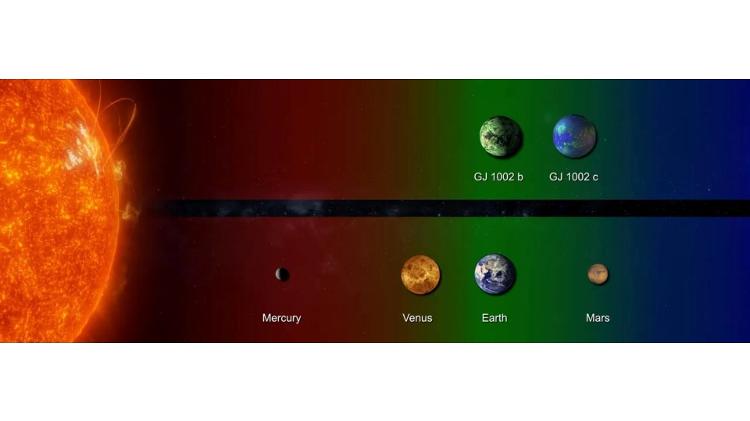Planets that could have life have been discovered 16 light years from Earth
3 min read
Researchers from the Canary Islands Institute of Astrophysics (IAC) recently revealed the existence of two planets, located in a neighboring planetary system, that have a high chance of being habitable. It is only 16 light years from Earth – “close” in astronomical terms.
As short a distance as this is for current spatial references, there is no prediction as to when we’ll be able to make one. short trip By then – this is more than 150 trillion km.
Studies are still in their infancy and it cannot be said, at this time, whether the planets GJ 1002b and GJ 1002c will be able to harbor humans or if they already have some other form of life.
But scientists came to the conclusion that the two planets are likely to be habitable, after verifying that their distance from the main star of their system is similar to the distance from Earth to the Sun. This area is known as the “habitable zone”.
The two planets orbit GJ 1002, a red dwarf star, a class with a mass between 0.1 and 0.7 of our Sun and also with a low temperature, between 3000°C and 4000°C, corresponding to the category of a yellow dwarf. , with a temperature close to 5500°C.
These factors mean that the habitability zones of the two discovered planets lie close to the star, according to one of the IAC researchers, Vera María Passegger. Planet GJ 1002b, for example, takes about ten days to orbit the star, while GJ1002 needs just over 21 days.
In practice, when using the term “habitable zone”, researchers mean that given the conditions – neither too hot nor too cold – there is a high probability of, for example, the existence of liquid water, which is one of the key ingredients for the existence of the forms of life we know.
However, water is only one factor. There are other issues that need to be assessed, such as the atmosphere and the presence of gases such as oxygen and hydrogen.
Researchers who will publish a study on the planets in the journal astronomy 🇧🇷 Astrophysics They also discovered that the masses of these planets are similar to those of Earth. The information is from the American science and technology website CNET.
“Nature seems committed to showing that Earth-like planets are very common. With these two, we now know seven in planetary systems very close to the Sun,” said IAC researcher Alejandro Suarez Mascarenio.
It is worth noting that being in a habitable zone does not necessarily mean that there is life there. Two examples of this are our neighbors Mars and Venus, which occupy this region relative to the Sun, but are unable to unlock life as we know it.
Not far, not too close
Despite the unknowns surrounding these two new planets, the discovery represents a huge step towards the future of humanity. The planetary system in question, called GJ, is located about 16 light-years from Earth, which would make it our neighbor – in astronomical terms, of course.
Although that’s a short distance relative to current spatial references, there’s no prediction about when we’ll be able to make the trek there – it’s more than 150 trillion km.
Travel is still not possible, but study. Even with current scientific techniques, researchers can assess the atmospheres of these two exoplanets from a great distance — they’re so named because they lie outside our solar system.
One of the tools used for this purpose – which was involved in the discovery – is the espresso. No, it has nothing to do with coffee, but rather the “affectionate” name given to the Echelle Spectrograph for Rocky Exoplanets and Stabilized Spectroscopic Observations, an extremely sensitive instrument that measures changes in the spectrum of light mounted on a structure called the Very Large Telescope (VLT). The pool is huge A group of optical telescopes built in the desert Atacama is in a partnership between Chile and the European Southern Observatory (ESO).
Another instrument is Carmenes, which uses a method called Doppler spectroscopy — also known as radial velocity measurement — and is installed in a telescope at the Calar Alto Observatory, located in Andalusia, southern Spain.

“Musicaholic. Thinker. Extreme travel trailblazer. Communicator. Total creator. Twitter enthusiast.”








